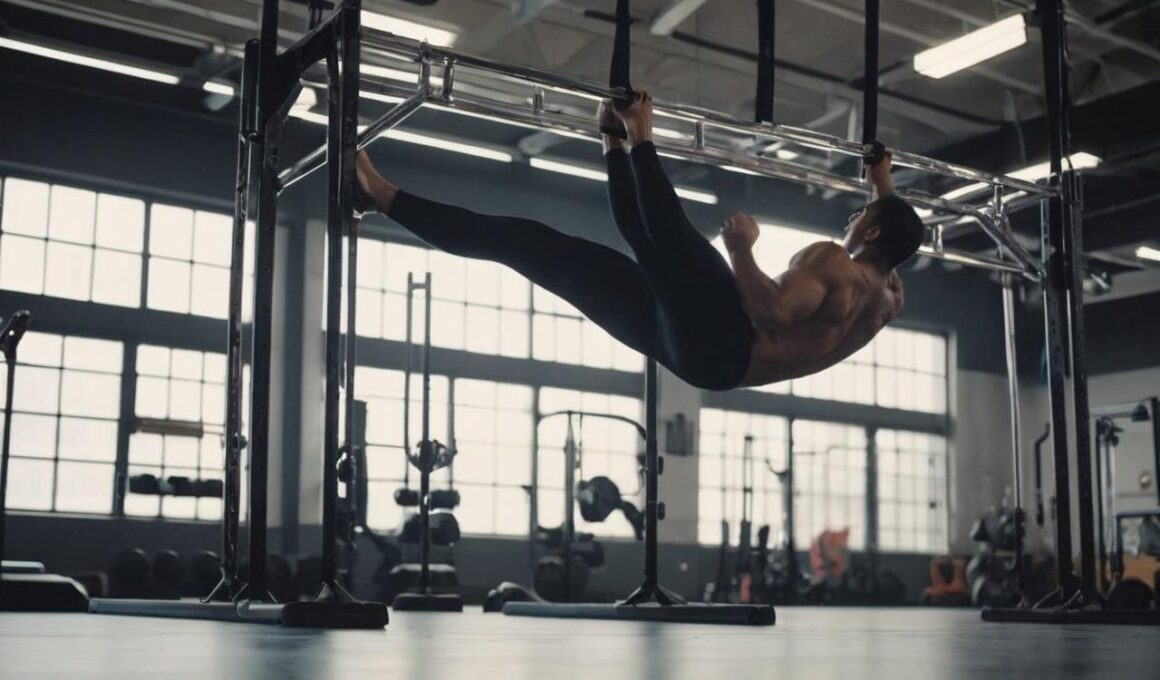The back lever is a challenging gymnastic skill that requires strength, flexibility, and control. In this article, we will explore the intricacies of the back lever, breaking down the technique, benefits, and training tips to help you master this impressive feat.
Understanding the Back Lever
The back lever, also known as the reverse planche, is a static strength exercise where the body is held horizontally while suspended parallel to the ground. This position requires a combination of core strength, shoulder stability, and a solid grip on the gymnastic rings or bar.
Technique and Form
Executing a perfect back lever involves hanging from a bar or rings, then gradually lifting the legs and torso until the body is parallel to the ground. The arms should be fully extended, and the shoulders engaged to maintain a straight line from head to toe.
Beginners often start with tuck or straddle variations before progressing to the full straight body position. It’s crucial to focus on gradual progression to avoid overloading the muscles and risking injury.
Benefits of Back Lever Training
1. Core Strength: The back lever heavily engages the core muscles, including the abdominals and lower back, promoting overall core strength and stability.
2. Shoulder Stability: The exercise enhances shoulder stability and strength, which is vital for various athletic activities and injury prevention.
3. Body Control: Mastering the back lever improves body awareness and control, contributing to better overall athleticism.
Training Tips
1. Progress Gradually: Start with easier progressions and gradually advance to more challenging variations as your strength improves.
2. Consistent Practice: Regular practice is key to mastering the back lever. Include it in your training routine and be patient with the learning process.
3. Warm-up Adequately: Ensure a thorough warm-up, focusing on shoulder mobility and flexibility, before attempting back lever training to reduce the risk of injury.
Incorporating the back lever into your training routine can elevate your strength, flexibility, and overall athleticism. Remember to approach this skill with patience and dedication, and you’ll be rewarded with improved physical prowess. Now, go ahead and add the back lever to your fitness repertoire!
Najczęściej Zadawane Pytania
Before delving into further details, let’s address some common questions about the back lever:
| Pytanie | Odpowiedź |
|---|---|
| Jakie są podstawowe korzyści z treningu back lever? | Back lever wzmacnia głównie mięśnie brzucha, stabilizuje barki oraz poprawia ogólną kontrolę nad ciałem. |
| Czy back lever jest odpowiedni dla początkujących? | Tak, ale zaleca się zaczynanie od łatwiejszych wariantów i stopniowe przechodzenie do pełnej wersji. |
| Jak często należy ćwiczyć back lever? | Regularna praktyka jest kluczowa. Zaleca się włączenie back lever do rutyny treningowej i cierpliwość w procesie nauki. |
Exploring Variations and Progressions
Beyond the basic back lever, there are various advanced variations and progressions to challenge and diversify your training. Some notable ones include:
- Advanced Tuck Back Lever: In this variation, the knees are further extended, increasing the difficulty.
- Single Leg Back Lever: Lifting one leg while maintaining the straight body position adds an extra challenge.
- One Arm Back Lever: An advanced skill requiring exceptional upper body strength and stability.
Common Mistakes to Avoid
While pursuing the back lever, be mindful of common mistakes that can hinder progress and increase the risk of injury:
- Overlooking Proper Warm-up: Neglecting a thorough warm-up can lead to muscle strain and injuries. Prioritize shoulder mobility exercises.
- Rushing Progression: Advancing too quickly to advanced variations without mastering the basics may result in poor form and potential setbacks.
- Inadequate Core Engagement: Failing to engage the core properly can diminish the effectiveness of the exercise and compromise stability.
